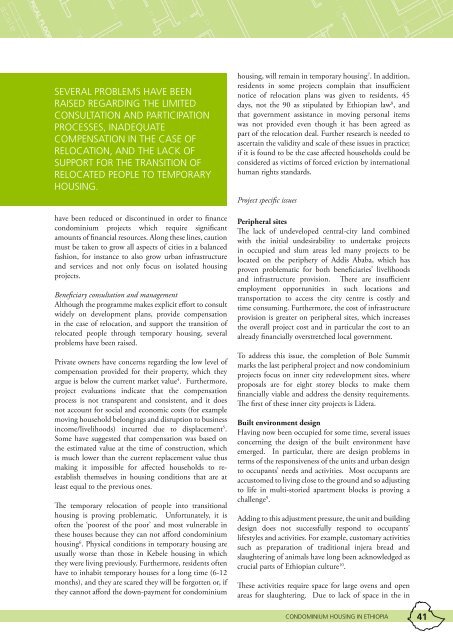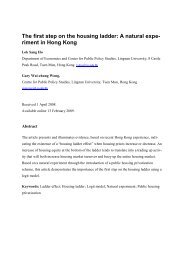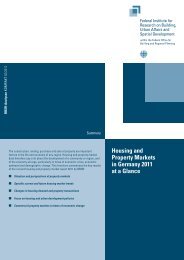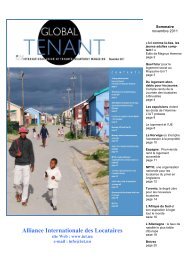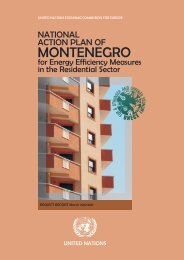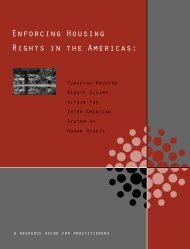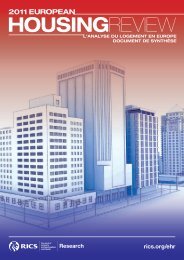condominium housing in ethiopia - International Union of Tenants
condominium housing in ethiopia - International Union of Tenants
condominium housing in ethiopia - International Union of Tenants
- No tags were found...
You also want an ePaper? Increase the reach of your titles
YUMPU automatically turns print PDFs into web optimized ePapers that Google loves.
SEVERAL PROBLEMS HAVE BEENRAISED REGARDING THE LIMITEDCONSULTATION AND PARTICIPATIONPROCESSES, INADEQUATECOMPENSATION IN THE CASE OFRELOCATION, AND THE LACK OFSUPPORT FOR THE TRANSITION OFRELOCATED PEOPLE TO TEMPORARYHOUSING.have been reduced or discont<strong>in</strong>ued <strong>in</strong> order to f<strong>in</strong>ance<strong>condom<strong>in</strong>ium</strong> projects which require significantamounts <strong>of</strong> f<strong>in</strong>ancial resources. Along these l<strong>in</strong>es, cautionmust be taken to grow all aspects <strong>of</strong> cities <strong>in</strong> a balancedfashion, for <strong>in</strong>stance to also grow urban <strong>in</strong>frastructureand services and not only focus on isolated <strong>hous<strong>in</strong>g</strong>projects.Beneficiary consultation and managementAlthough the programme makes explicit effort to consultwidely on development plans, provide compensation<strong>in</strong> the case <strong>of</strong> relocation, and support the transition <strong>of</strong>relocated people through temporary <strong>hous<strong>in</strong>g</strong>, severalproblems have been raised.Private owners have concerns regard<strong>in</strong>g the low level <strong>of</strong>compensation provided for their property, which theyargue is below the current market value 4 . Furthermore,project evaluations <strong>in</strong>dicate that the compensationprocess is not transparent and consistent, and it doesnot account for social and economic costs (for examplemov<strong>in</strong>g household belong<strong>in</strong>gs and disruption to bus<strong>in</strong>ess<strong>in</strong>come/livelihoods) <strong>in</strong>curred due to displacement 5 .Some have suggested that compensation was based onthe estimated value at the time <strong>of</strong> construction, whichis much lower than the current replacement value thusmak<strong>in</strong>g it impossible for affected households to reestablishthemselves <strong>in</strong> <strong>hous<strong>in</strong>g</strong> conditions that are atleast equal to the previous ones.The temporary relocation <strong>of</strong> people <strong>in</strong>to transitional<strong>hous<strong>in</strong>g</strong> is prov<strong>in</strong>g problematic. Unfortunately, it is<strong>of</strong>ten the ‘poorest <strong>of</strong> the poor’ and most vulnerable <strong>in</strong>these houses because they can not afford <strong>condom<strong>in</strong>ium</strong><strong>hous<strong>in</strong>g</strong> 6 . Physical conditions <strong>in</strong> temporary <strong>hous<strong>in</strong>g</strong> areusually worse than those <strong>in</strong> Kebele <strong>hous<strong>in</strong>g</strong> <strong>in</strong> whichthey were liv<strong>in</strong>g previously. Furthermore, residents <strong>of</strong>tenhave to <strong>in</strong>habit temporary houses for a long time (6-12months), and they are scared they will be forgotten or, ifthey cannot afford the down-payment for <strong>condom<strong>in</strong>ium</strong><strong>hous<strong>in</strong>g</strong>, will rema<strong>in</strong> <strong>in</strong> temporary <strong>hous<strong>in</strong>g</strong> 7 . In addition,residents <strong>in</strong> some projects compla<strong>in</strong> that <strong>in</strong>sufficientnotice <strong>of</strong> relocation plans was given to residents, 45days, not the 90 as stipulated by Ethiopian law 8 , andthat government assistance <strong>in</strong> mov<strong>in</strong>g personal itemswas not provided even though it has been agreed aspart <strong>of</strong> the relocation deal. Further research is needed toascerta<strong>in</strong> the validity and scale <strong>of</strong> these issues <strong>in</strong> practice;if it is found to be the case affected households could beconsidered as victims <strong>of</strong> forced eviction by <strong>in</strong>ternationalhuman rights standards.Project specific issuesPeripheral sitesThe lack <strong>of</strong> undeveloped central-city land comb<strong>in</strong>edwith the <strong>in</strong>itial undesirability to undertake projects<strong>in</strong> occupied and slum areas led many projects to belocated on the periphery <strong>of</strong> Addis Ababa, which hasproven problematic for both beneficiaries’ livelihoodsand <strong>in</strong>frastructure provision. There are <strong>in</strong>sufficientemployment opportunities <strong>in</strong> such locations andtransportation to access the city centre is costly andtime consum<strong>in</strong>g. Furthermore, the cost <strong>of</strong> <strong>in</strong>frastructureprovision is greater on peripheral sites, which <strong>in</strong>creasesthe overall project cost and <strong>in</strong> particular the cost to analready f<strong>in</strong>ancially overstretched local government.To address this issue, the completion <strong>of</strong> Bole Summitmarks the last peripheral project and now <strong>condom<strong>in</strong>ium</strong>projects focus on <strong>in</strong>ner city redevelopment sites, whereproposals are for eight storey blocks to make themf<strong>in</strong>ancially viable and address the density requirements.The first <strong>of</strong> these <strong>in</strong>ner city projects is Lideta.Built environment designHav<strong>in</strong>g now been occupied for some time, several issuesconcern<strong>in</strong>g the design <strong>of</strong> the built environment haveemerged. In particular, there are design problems <strong>in</strong>terms <strong>of</strong> the responsiveness <strong>of</strong> the units and urban designto occupants’ needs and activities. Most occupants areaccustomed to liv<strong>in</strong>g close to the ground and so adjust<strong>in</strong>gto life <strong>in</strong> multi-storied apartment blocks is prov<strong>in</strong>g achallenge 9 .Add<strong>in</strong>g to this adjustment pressure, the unit and build<strong>in</strong>gdesign does not successfully respond to occupants’lifestyles and activities. For example, customary activitiessuch as preparation <strong>of</strong> traditional <strong>in</strong>jera bread andslaughter<strong>in</strong>g <strong>of</strong> animals have long been acknowledged ascrucial parts <strong>of</strong> Ethiopian culture 10 .These activities require space for large ovens and openareas for slaughter<strong>in</strong>g. Due to lack <strong>of</strong> space <strong>in</strong> the <strong>in</strong>Condom<strong>in</strong>ium Hous<strong>in</strong>g <strong>in</strong> <strong>ethiopia</strong>41


